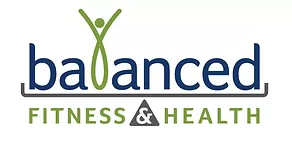When we talk about stress in the workplace or in life, it’s usually in a negative light — a threat to our health, productivity, and peace of mind. And while chronic, unmanaged stress can absolutely take a toll, the full picture is more nuanced.
Not all stress is harmful. In fact, some stress can be helpful — even essential — for growth, performance, and motivation.
Let’s explore the difference.
Understanding the Two Types of Stress
Stress is your body’s response to a challenge or demand, but it comes in different forms:
1. Distress is the harmful kind most people associate with the term “stress.” It’s prolonged, overwhelming, and often leads to burnout, fatigue, and decreased performance.
These distressing experiences can lead the body to be stuck in “fight or flight” mode and impair its ability to return to a calm, regulated state.
Health Conditions Associated with Chronic Distress:
-
Migraines and cluster headaches
-
Digestive disorders (e.g., IBS)
-
Insomnia and disrupted sleep
-
Chronic pain and inflammation
-
Anxiety, depression, and mood disorders
-
Cognitive decline and memory issues
2. Eustress, on the other hand, is a positive form of stress. It’s short-term, energizing, and typically associated with a sense of excitement, focus, or motivation. It’s what you feel before a major presentation, a big decision, or when you're pushing yourself toward a meaningful goal.
Both types produce a similar physiological response — a quickened heartbeat, heightened awareness — but the key difference lies in how we interpret and respond to them.
Why Eustress Matters
Eustress plays a critical role in both personal and professional development. It:
-
Enhances performance – Moderate levels of stress can sharpen your focus and boost cognitive functioning, especially when you're working on important tasks.
-
Drives growth – Stepping outside your comfort zone, whether you're taking on a leadership role or tackling a new project, often comes with stress — the productive kind that pushes you to expand your skill set.
-
Builds resilience – Learning how to manage and channel stress constructively helps build emotional strength and adaptability over time.
Practical Ways to Harness Positive Stress
So how do you encourage healthy stress while minimizing the harmful kind?
-
Reframe your mindset
View challenging situations as opportunities rather than threats. This cognitive shift can transform stress into motivation rather than anxiety. -
Set clear, achievable goals
Goals that stretch your capabilities without overwhelming you create a sense of progress and purpose — the sweet spot where eustress thrives. -
Take breaks to reset
Even positive stress needs balance. Pausing to rest, reflect, and recharge is essential for maintaining sustainable performance. -
Stay connected
Supportive relationships at work and at home provide a buffer against distress and help you maintain perspective when demands increase.
Final Thoughts
Stress isn’t inherently good or bad — it’s information. The key is learning to distinguish between the types of stress we experience and intentionally leaning into the kind that fuels performance, creativity, and resilience.
By recognizing and managing stress more effectively, we not only protect our well-being — we empower ourselves to rise to the occasion, grow, and thrive in the face of challenge.
